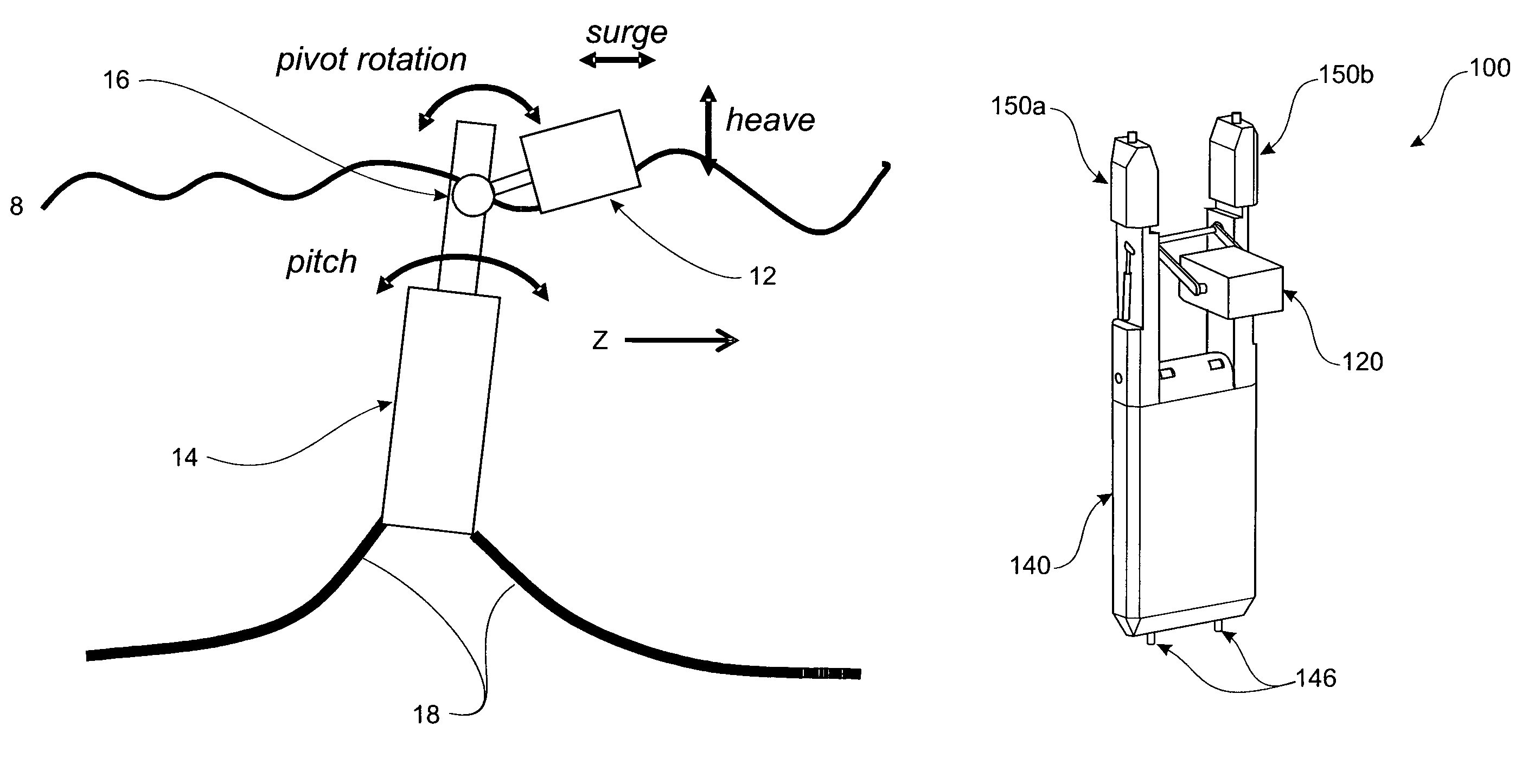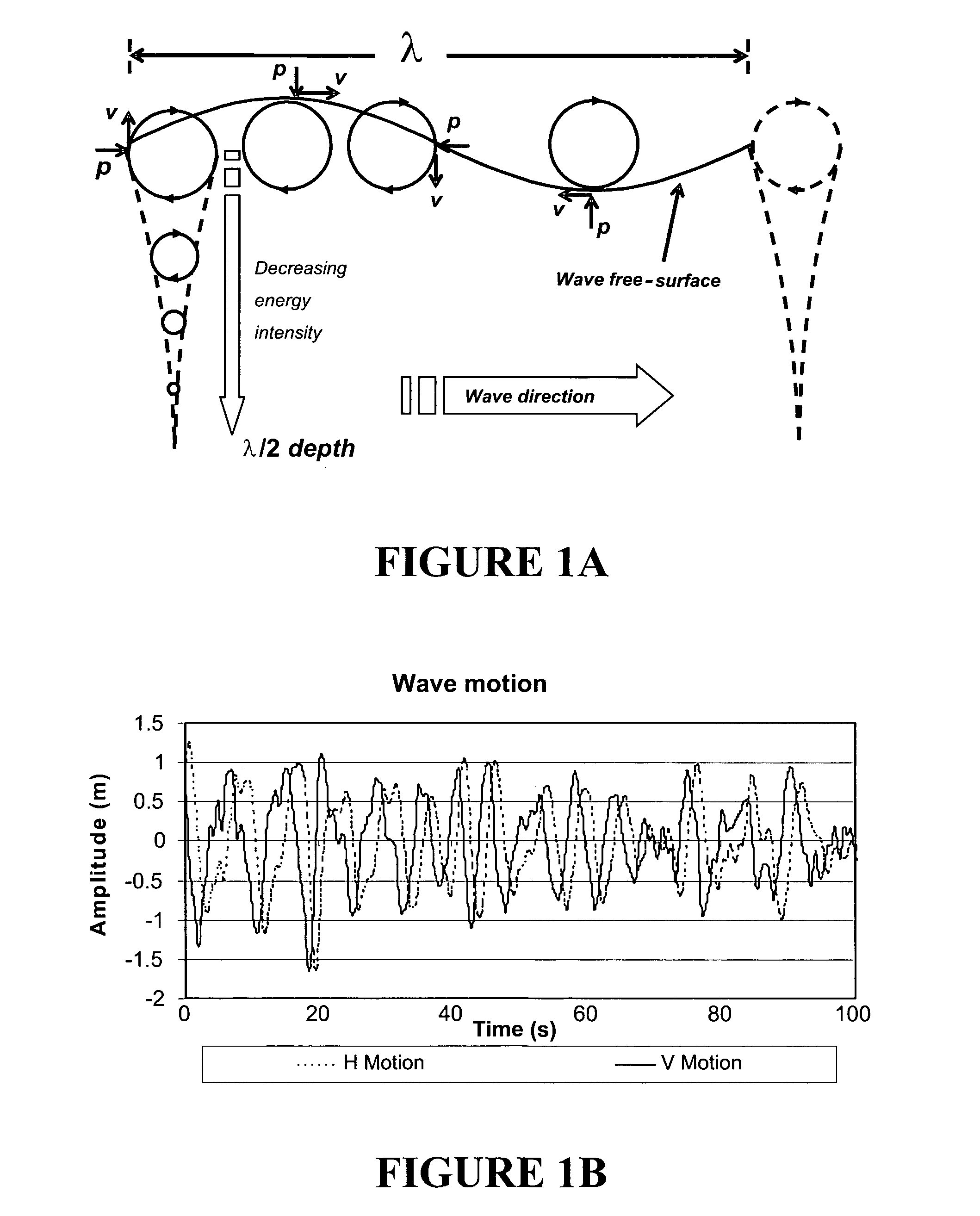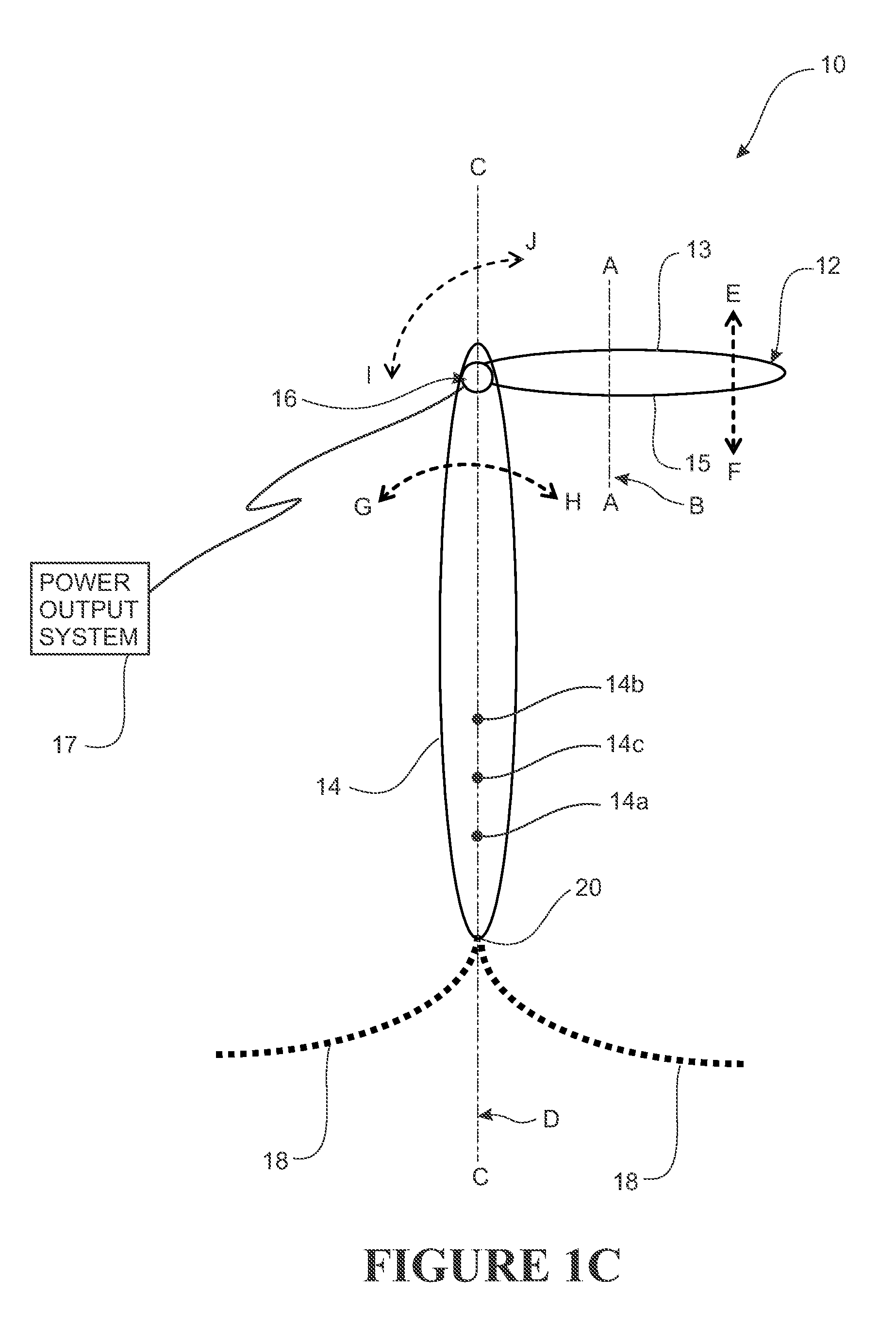Wave energy converter
a wave energy converter and converter technology, applied in the direction of electric generator control, machines/engines, mechanical equipment, etc., can solve the problems of limiting the adaptability to wave conditions, difficult to design a cost effective device, and large devices tend to have low overall conversion efficiency, etc., to enhance the effect of enhancing the pitch movement of the reactive body and minimizing the heave movemen
- Summary
- Abstract
- Description
- Claims
- Application Information
AI Technical Summary
Benefits of technology
Problems solved by technology
Method used
Image
Examples
first preferred embodiment
2 kW Experimental Device
[0135]Referring to FIGS. 8a-8e, a first preferred embodiment of the wave energy converter 100 in the form of a 2 kW experimental device will be described.
2 kW Experimental Device—Active Float
[0136]The active float 120 is substantially elongate extending between a first 120a that is proximal to the reactive body 140 and a second 120b end that is distal to the reactive body. The cross-sectional area between the ends 120a,120b is defined peripherally by opposed top 120c and bottom 120d surfaces that are joined by opposed side surfaces 120e, 120f. The active float 120 has a uniform cross-sectional profile along its length, although it will be appreciated that a non-uniform profile could alternatively be used. The active float 120 has a length L1 of approximately 1.0 m, width W1 of approximately 0.7 m, and a depth D1 of approximately 0.5 m. The active float 120 has a dry weight of approximately 350 kg. The active float 120 is indirectly pivotably coupled to the re...
second preferred embodiment
100 kW Device
[0144]Referring to FIGS. 9a-9e, a second preferred embodiment of the wave energy converter 200 in the form of a 100 kW device will be described. The 100 kW device is similar in design to the experimental 2 kW device 100, but is larger in scale. The device 200 comprises an active float 220, reactive body 240 (with a main body 240a, and support arms 240b,c), and a sub-frame 222 for pivotably coupling the active float to the reactive body to enable relative pivotable movement between the bodies about pivot axis 260. The power output system may be as described previously and may be integrated into the support arms 240b,c of the reactive body 240.
[0145]The total length L7 of the reactive body 240 is approximately 20 m, with the length L5 of the support arms 240b,c being approximately 6.8 in and the length L6 of the main body 240a being approximately 13.2 m. The reactive body 240 has a width W3 of approximately 7.5 m and a depth D3 of approximately 1.6 m. The dry weight of th...
PUM
 Login to View More
Login to View More Abstract
Description
Claims
Application Information
 Login to View More
Login to View More - R&D
- Intellectual Property
- Life Sciences
- Materials
- Tech Scout
- Unparalleled Data Quality
- Higher Quality Content
- 60% Fewer Hallucinations
Browse by: Latest US Patents, China's latest patents, Technical Efficacy Thesaurus, Application Domain, Technology Topic, Popular Technical Reports.
© 2025 PatSnap. All rights reserved.Legal|Privacy policy|Modern Slavery Act Transparency Statement|Sitemap|About US| Contact US: help@patsnap.com



